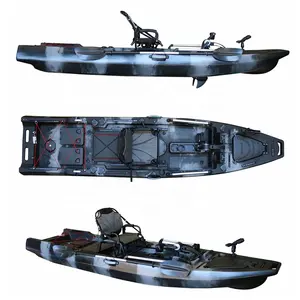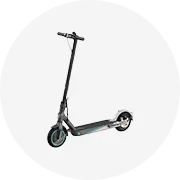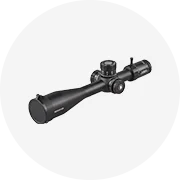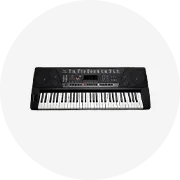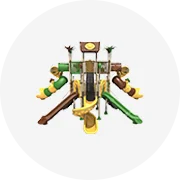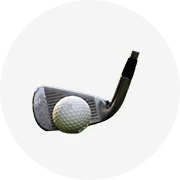Populair in uw branche






Elektrische Scooter Onderdelen Voor Mijia M365 Pro Reparatie Vervanging Spare Accessoires
TRY 34,21 - TRY 341,66
Min. bestelling: 1 stuk






Hoge Precisie Frezen Elektrische Apparaten Hardware Accessoires Cnc Draaibank Onderdelen
TRY 34,21 - TRY 85,51
Min. bestelling: 1 stuk







Aangepaste Kunststof Spuitgieten Service Shell Elektrische Ventilator Plastic Onderdelen
TRY 17,11 - TRY 51,31
Min. bestelling: 1000 packs







48V 800W Door Mensen Aangedreven Driewieler Naar Elektrische Auto Booster Borstelloze Motor Conversieset Controller Tandplaat Diy
Klaar voor verzending
TRY 2.049,96 - TRY 2.171,37
Min. bestelling: 2 stukken
Verzending per stuk: TRY 676,48







Yp, Yuxin 1000W Grasmaaier Motor 2200W Bldc Elektromotor Dc 48V 3600Rpm Voor Grasmaaier Atv Utv Golfkar
TRY 2.052,01 - TRY 2.736,01
Min. bestelling: 2 stukken







Super 250W-8000W Borstelloze Elektrische Fiets Motor Andere Elektrische Fiets Onderdelen Elektrische Fiets Conversieset Elektrische Driewielers
TRY 2.701,47 - TRY 15.388,68
Min. bestelling: 1 set






Motorfiets Alarm Waterdichte Usb Oplaadbare Bel Voor Weg Mountainbike Accessoires Onderdelen Elektrische Scooter Bel Ring
Klaar voor verzending
TRY 174,43 - TRY 177,85
Min. bestelling: 2 stukken
Verzending per stuk: TRY 195,63






Nieuwe Image Escooter Oplader Spatbordtas Diverse Reparatie Onderdelen Accessoires Voor Xiaomi Mijia M365 Elektrische Scooter Reserveonderdelen
TRY 23,95 - TRY 564,31
Min. bestelling: 2 stukken



Scooter Band 200X50 Massief Rubberen Band 8 Inch Banden Velg Elektrische Scooter Wiel Stoel Onderdelen
Klaar voor verzending
TRY 393,31 - TRY 495,91
Min. bestelling: 1 stuk
Verzending per stuk: TRY 998,31

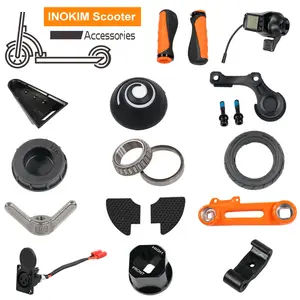




Onderdelen Elektrische Scooter Onderdelen Voor Xiaomi 1S M365 Pro ES1 ES2 ES4 Max G30 Kugoo Nul Vsett Elektrische scooter Accessoires
TRY 34,21 - TRY 273,61
Min. bestelling: 2 stukken






Scooter Elektrische Motorfiets Golf Volwassen 2000W Off Road Turkije 1000W Onderdelen 350W Scooters Gratis Verzending
Klaar voor verzending
TRY 4.959,02 - TRY 5.517,51
Min. bestelling: 2 stukken
Verzending per stuk: TRY 2.650,51






Xiaomi M365 Pro 1S Pro2 Essentiële Max G30 Kugoo Nul Inokim Elektrische Scooter Onderdelen Reparatie Accessoires
TRY 102,26 - TRY 204,86
Min. bestelling: 10 stukken






2024 Elektrische Scooteronderdelen Voor Inmotion Rs Nieuwe Originele Accessoires Vragen Verkoper Voor Details
Klaar voor verzending
TRY 0,3421 - TRY 3,77
Min. bestelling: 10 stukken
Verzending per stuk: TRY 855,01






60V 72V Surron Onderdelen Licht Bee X Onderdelen 10kw Sur Ron Motor 400a Surron Controller Talaria Angel Onderdelen Elektrische Fiets Kits
TRY 31.087,90 - TRY 34.165,90
Min. bestelling: 1 doos






Jak Mechanische Disc Remklauwen Achter En Links Remklauw Voor Xiaomi M365 Mijia Elektrische Scooter Accessoires Onderdelen
Klaar voor verzending
TRY 119,71 - TRY 232,57
Min. bestelling: 1 stuk
Verzending per stuk: TRY 297,20






Amoto Top Verkoper E Vet E-Scooter Fenders 60V 1000W 1500W 60V Volwassen Elektrische Motorfiets scooter Citycoco Spatbord Onderdelen
TRY 273,61 - TRY 342,01
Min. bestelling: 1 eenheid






Nbpower Frame Met Kke Voorvork En Kke Rear Shock Voor Elektrische Enduro Fiets Ebike Conversion Deel
TRY 2.907,01 - TRY 10.909,84
Min. bestelling: 2 sets
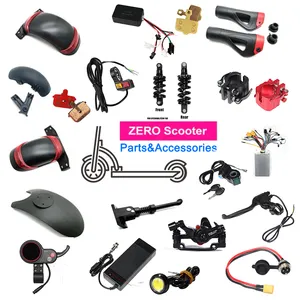





2023 Nul 9 10x 11x Xiaomi M365 Pro 1S Pro2 Essentiële Max G30 Kugoo Zero Elektrische Scooter Onderdelen Reparatie Accessoires
Klaar voor verzending
TRY 61,57 - TRY 369,37
Min. bestelling: 2 stukken
Verzending per stuk: TRY 507,53






Xuancheng Dikke Band 100/55-6.5 Elektrische Scooter Buis Banden Onderdelen Duurzame Bandenfabrikant
TRY 224,02 - TRY 258,22
Min. bestelling: 200 stukken




Ev Auto Conversie Kit/Lage Prijs Hoge Kwaliteit 5000 Watt Hub Motor Voor Elektrische Auto Onderdelen De Elektrische motor
TRY 13.680,04 - TRY 34.165,90
Min. bestelling: 1 set






Bringsmart JGB37-520X Mini Tandwielmotor 12 Volt Dc Motor Hoog Koppel 24 Volt Omkeerbare Metalen Elektrische Motor Uitrustingsonderdelen
TRY 146,04 - TRY 187,42
Min. bestelling: 2 stukken






Fabriek Prijs 48V 1500W Elektrische Fiets Onderdelen Met 52V Onderbuis Lithium Batterij
TRY 4.788,02 - TRY 4.959,02
Min. bestelling: 1 set






Ecorider E4-9 Fabriek Groothandel Elektrische Scooter Onderdelen En Accessoires, Elektrische Scooter Body Frame Onderdelen
TRY 513,01 - TRY 19.836,06
Min. bestelling: 1 stuk






China Custom Spuitgieten Magnesium Legering Elektrische Scooter Frame Onderdelen Vouwen Sterke Frame
TRY 2.223,01 - TRY 2.565,01
Min. bestelling: 1 stuk






Elektrische Fiets Onderdelen Elektrische Fiets Accessoires Lcd-scherm AK47 Voor Elektrische Fiets Conversie Kit En Elektrische Fiets Kit
TRY 201,10 - TRY 225,04
Min. bestelling: 100 stukken






48-72V Sabvoton 80a Elektrische Fiets Controller Borstelloze Motor Elektrische Fiets Deel Met Lcd UKC1 Display En Throttle
TRY 8.105,43 - TRY 8.276,43
Min. bestelling: 5 stukken






24v50A Borstel Controller + Rolstoel Controle Handvat/Joystick + Usb-poort Opladen Voor Elektrische Scooter Mobiliteit Fun Voertuig Deel
Klaar voor verzending
TRY 2.667,61
Min. bestelling: 2 stukken
Verzending per stuk: TRY 637,15






Op Maat Gemaakte Hoge Kwaliteit Atv Onderdelen Elektrische Riksja Differentieel Auto Achteras Elektrische Driewieler
TRY 2.462,41 - TRY 3.283,21
Min. bestelling: 2 stukken






Scooter Accessoires Onderdelen Elektrische Scooter Onderdelen Scooter Kit Voor Kugoo M2 Pro Controller Wiel Motor Accu
TRY 32,50 - TRY 37,63
Min. bestelling: 10 stukken






Hoge Kwaliteit Elektrische Fiets Onderdelen 24V 36V 48V Lcd Display Voor Ebike Batterij Meter M5 Display
TRY 855,01 - TRY 1.026,01
Min. bestelling: 1 stuk






Vervanging Moederbord Voor M365 Scooter Onderdelen Elektrische Scooter Accessoires
Klaar voor verzending
TRY 889,21 - TRY 957,61
Min. bestelling: 1 hectare
Verzending per stuk: TRY 395,02



96V 15kw 50/60Hz Golfkar Ev Auto Onderdelen Elektrische Ac Motor
TRY 17.100,05 - TRY 20.520,06
Min. bestelling: 1 stuk






Yyk Controller 48V 60V 72V 50a 80a 24 Mos 1500W 2000W 3000W Naaf Motor Elektrische Motorfiets Controller Elektrische Fietsonderdelen
Klaar voor verzending
TRY 2.223,01 - TRY 2.838,61
Min. bestelling: 5 stukken
Verzending per stuk: TRY 727,78



China Fabrikant Autoruit Elektrische Dc Motor Voor Onderdelen Van Het Elektrische Parkeersysteem
TRY 119,71 - TRY 136,81
Min. bestelling: 1000 stukken






Unicool Unigogo Nieuwe G2 Max Elektrische Scooter Lichaamsdelen Elektrische Scooter Grote Banden Elektrische Scooter Gemaakt In China
Klaar voor verzending
TRY 15.732,05 - TRY 16.381,85
Min. bestelling: 1 eenheid
Verzending per stuk: TRY 11.461,14






Kugoo Kirin G3 Elektrische Scooter Officiële Accessoires Reserveonderdelen Vouwbare Assemblage Kogellagers Motor
Klaar voor verzending
TRY 684,01
Min. bestelling: 5 eenheden
Verzending per stuk: TRY 34.200,10






Originele Groothandel Scooter Onderdelen Voor Hx X9 Elektrische Scooter Onderdelen Controller Display Kit
Klaar voor verzending
TRY 979,84 - TRY 1.329,02
Min. bestelling: 1 hectare
Verzending per stuk: TRY 512,32






E Fiets Elektrische Fiets Onderdelen Elektrische Fiets Conversie Kit
TRY 2.872,81 - TRY 3.625,22
Min. bestelling: 2 sets





Kleine Maat E-Bike Onderdelen Elektrische Fiets Dc Motor Controller 36v250w
TRY 290,71 - TRY 359,11
Min. bestelling: 1 stuk






E-Scooter Onderdelen Accessoires Sets Controller Dashboard Achterlicht Reparatie Vervanging Voor Xiaomi M365 Elektrische Scooter Onderdelen
Klaar voor verzending
TRY 7,19 - TRY 704,87
Min. bestelling: 2 stukken
Verzending per stuk: TRY 438,11
Topcategorieën
Over deel elektrisch
Vind echt deel elektrisch. op Alibaba.com om te helpen met een snellere en efficiënte verplaatsing van plaats naar plaats. Deze hoogwaardige uitrusting combineert de veiligheid en prestaties van de gebruikers om de rit plezierig en zeker te maken. Deze stallen deel elektrisch. zijn veelzijdig met verstelbare handgrepen die geschikt zijn voor alle leeftijden, aangezien ze kunnen worden aangepast aan alle hoogtes. De speciaal ontworpen kunststof en rubberen handgreep zijn essentieel voor een betere grip tijdens het cruisen met hogere snelheid.
Deze modieuze en stijlvolle deel elektrisch. zijn gemaakt met de nieuwste innovatie en design voor een moeiteloze rit. De duurzame wielen zijn gemaakt van slijtvaste materialen om de dagelijkse uitdagingen te weerstaan. De wielen zijn betrouwbaar op ruige wegen omdat ze schokabsorberende technologie hebben die de gebruiker dempt tegen de wankele impact. De antislipwielen verhogen ook de veiligheid, aangezien hun grip op de weg en het trottoir ongevallen beperkt.
Deze elegante deel elektrisch. bij Alibaba.com zijn ook stabiel dankzij hun uniek ontworpen dekken. Deze ruime dekken bieden voldoende voetruimte die de gebruikers tijdens het rijden een hoog evenwicht geeft om hun veiligheid verder te vergroten. Deze ultramoderne uitrustingsdecks zijn ook gemaakt om slipvrij te zijn, zodat de gebruikers zich volledig kunnen concentreren op de rit zonder zich zorgen te hoeven maken dat ze vallen.
Overwin het verleidelijke deel elektrisch. die worden aangeboden op Alibaba.com waar de selectie voor iedereen enorm is. Leveranciers wordt aangeraden deze apparatuur van de beste kwaliteit te kopen voor wederverkoop en ook voor persoonlijk gebruik. De opties zijn verbluffend met alle reeksen van kleuren, maten en aangepast ontwerp, afhankelijk van wat je besluit te kopen.
Deze modieuze en stijlvolle deel elektrisch. zijn gemaakt met de nieuwste innovatie en design voor een moeiteloze rit. De duurzame wielen zijn gemaakt van slijtvaste materialen om de dagelijkse uitdagingen te weerstaan. De wielen zijn betrouwbaar op ruige wegen omdat ze schokabsorberende technologie hebben die de gebruiker dempt tegen de wankele impact. De antislipwielen verhogen ook de veiligheid, aangezien hun grip op de weg en het trottoir ongevallen beperkt.
Deze elegante deel elektrisch. bij Alibaba.com zijn ook stabiel dankzij hun uniek ontworpen dekken. Deze ruime dekken bieden voldoende voetruimte die de gebruikers tijdens het rijden een hoog evenwicht geeft om hun veiligheid verder te vergroten. Deze ultramoderne uitrustingsdecks zijn ook gemaakt om slipvrij te zijn, zodat de gebruikers zich volledig kunnen concentreren op de rit zonder zich zorgen te hoeven maken dat ze vallen.
Overwin het verleidelijke deel elektrisch. die worden aangeboden op Alibaba.com waar de selectie voor iedereen enorm is. Leveranciers wordt aangeraden deze apparatuur van de beste kwaliteit te kopen voor wederverkoop en ook voor persoonlijk gebruik. De opties zijn verbluffend met alle reeksen van kleuren, maten en aangepast ontwerp, afhankelijk van wat je besluit te kopen.


